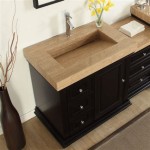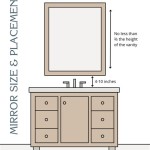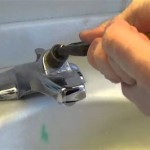How To Fix The Plug In My Bathroom Sink
A malfunctioning bathroom sink plug can be a significant inconvenience, leading to slow drainage, a constantly full sink, or water leakage. Addressing this issue promptly can prevent more serious plumbing problems and restore the sink's functionality. The following guide provides a step-by-step approach to diagnosing and fixing common bathroom sink plug problems.
Identifying the Problem
Before attempting repairs, it is crucial to identify the precise nature of the problem. Common issues include:
Plug Not Sealing Properly: Water slowly drains even when the plug is in the closed position. This suggests a faulty seal, either due to debris accumulation, misalignment, or wear and tear of the rubber components.
Plug Stuck in Open or Closed Position: The plug remains fixed, preventing the sink from either draining or retaining water. This often indicates a problem with the linkage mechanism or a buildup of grime and corrosion.
Difficulty Operating the Lift Rod: The lift rod, which controls the plug, is stiff, difficult to move, or completely inoperable. This typically signals a problem with the pivot rod assembly beneath the sink.
Plug is Loose or Wobbly: The plug moves excessively, making it difficult to seal or operate properly. This may point to damaged or missing components in the plug assembly.
Once the problem is identified, the appropriate repair strategy can be formulated.
Gathering Necessary Tools and Materials
Preparedness is key to a successful plumbing repair. Before commencing any work, assemble the following tools and materials:
Adjustable Wrench: For loosening and tightening nuts and bolts.
Pliers: For gripping and manipulating small parts.
Screwdrivers (Phillips and Flathead): To remove screws and adjust various components.
Penetrating Oil (e.g., WD-40): To loosen corroded parts.
Plumber's Putty: To create watertight seals.
Clean Rags or Towels: To clean up spills and protect surfaces.
Bucket or Basin: To catch water during disassembly.
Gloves: To protect hands from dirt and debris.
Small Brush or Toothbrush: For cleaning small parts.
Replacement Parts (if needed): New plug, stopper, pivot rod, or other components as required based on the diagnosis.
Having these materials readily available will streamline the repair process.
Step-by-Step Repair Procedures
The following steps outline a general procedure for fixing a faulty bathroom sink plug. The specific actions required may vary depending on the type of sink and drain assembly.
1. Preparing the Work Area: Begin by clearing the area beneath the sink. Place a bucket or basin under the drain assembly to catch any water that may spill during disassembly. Turn off the water supply to the sink. This is typically done by locating the shut-off valves under the sink and turning them clockwise until fully closed. If there are no dedicated shut-off valves, the main water supply to the house will need to be turned off.
2. Disassembling the Plug Mechanism: Locate the pivot rod, a horizontal rod extending from the drainpipe. This rod connects the lift rod (the lever on the sink that controls the plug) to the plug assembly. Disconnect the lift rod from the pivot rod. This is usually accomplished by loosening a setscrew or clip that secures the two rods together. Next, unscrew the pivot rod nut, which holds the pivot rod in place on the drainpipe. Carefully remove the pivot rod, noting its orientation for reassembly. Be prepared for some water to drain out.
3. Removing the Plug: With the pivot rod removed, the plug should be free to be lifted out of the drain. If the plug is stuck, gently rock it back and forth while pulling upwards. Avoid using excessive force, which could damage the drainpipe. If the plug remains lodged, try applying penetrating oil around the edges and waiting a few minutes before attempting to remove it again.
4. Cleaning and Inspecting the Components: Thoroughly clean all components, including the plug, pivot rod, and drainpipe opening. Use a small brush or toothbrush to remove any accumulated grime, hair, or debris. Inspect the plug for signs of wear or damage. Check the rubber seal (if present) for cracks or deterioration. Examine the pivot rod for corrosion or bending. If any components are damaged beyond repair, replace them with new ones.
5. Reassembling the Plug Mechanism: Once all components are clean and inspected, begin reassembling the plug mechanism. Insert the plug back into the drain opening. Ensure it is properly aligned. Reinsert the pivot rod through the hole in the drainpipe and through the opening in the plug. Secure the pivot rod with the pivot rod nut. Tighten the nut snugly, but avoid over-tightening, which could damage the drainpipe. Reconnect the lift rod to the pivot rod, ensuring that the plug operates smoothly and seals properly when the lift rod is in the closed position.
6. Testing the Repair: Turn the water supply back on. Check for leaks around the pivot rod nut and drainpipe connections. Operate the lift rod to open and close the plug. Verify that the plug seals properly and that the sink drains effectively. If any leaks are detected, tighten the connections further or apply plumber's putty to create a watertight seal.
Troubleshooting Common Problems
Even after following the above steps, certain issues may persist. The following troubleshooting tips address common problems encountered during bathroom sink plug repair.
Leakage Around the Pivot Rod: If water leaks around the pivot rod nut, try tightening the nut further. If the leak persists, remove the pivot rod and apply a small amount of plumber's putty around the pivot rod before reinserting it. Ensure the putty creates a complete seal between the pivot rod and the drainpipe.
Plug Not Sealing Properly After Reassembly: If the plug still does not seal properly after reassembly, check the alignment of the lift rod and pivot rod. Ensure that the lift rod is positioned correctly to fully close the plug. Adjust the length of the lift rod by loosening the setscrew and repositioning the rod in the connector. Also, inspect the plug for any remaining debris or damage that may be preventing a proper seal. If the plug has a rubber seal, consider replacing it with a new one.
Stiff or Difficult Lift Rod Operation: If the lift rod is still stiff or difficult to operate after reassembly, apply penetrating oil to the pivot rod and lift rod connections. Allow the oil to penetrate for a few minutes before attempting to operate the lift rod again. If the problem persists, disassemble the mechanism again and clean all components thoroughly. Make sure there are no obstructions or corrosion inhibiting smooth movement.
Plug Still Stuck After Applying Penetrating Oil: If the plug remains stuck in the drainpipe after applying penetrating oil, try using a plunger to dislodge it. Create a tight seal around the drain opening with the plunger and apply firm, consistent pressure. If the plunger does not work, consider using a drain snake to break up any obstructions in the drainpipe. Be careful not to damage the drainpipe with the snake.
Stripped or Damaged Threads: If the threads on the pivot rod nut or drainpipe are stripped or damaged, the nut will not tighten properly, and the connection will leak. In this case, the pivot rod nut and/or the drainpipe section may need to be replaced. Consult with a plumbing supply store to find the appropriate replacement parts.
By addressing these common problems systematically, the majority of bathroom sink plug issues can be resolved effectively.

How To Fix A Bathroom Sink Drain Stopper 4 Easy Solutions

How To Fix Pop Up Drain Waste Plug

How To Replace A Sink Stopper Quick And Simple Home Repair
How To Get A Bathroom Sink Plug Removed When It Won T Un Quora

How To Replace Or Maintain A Sink Pop Up Drain Assembly

How To Replace A Rusty Sink Drain Howtolou Com

5 Natural Ways To Unclog A Bathroom Sink Hiller How

How To Fix Stuck Push Sink Waste Spring Drain Plug Bathroom

How To Clear A Clogged Drain Reviews By Wirecutter
I Closed My Sink Drain Stopper And Now It Won T Open Again Is There Any Way That Can Repair This Without Hiring A Plumber Quora
Related Posts







